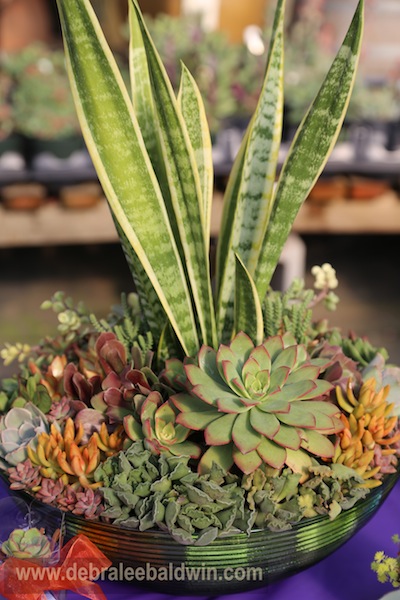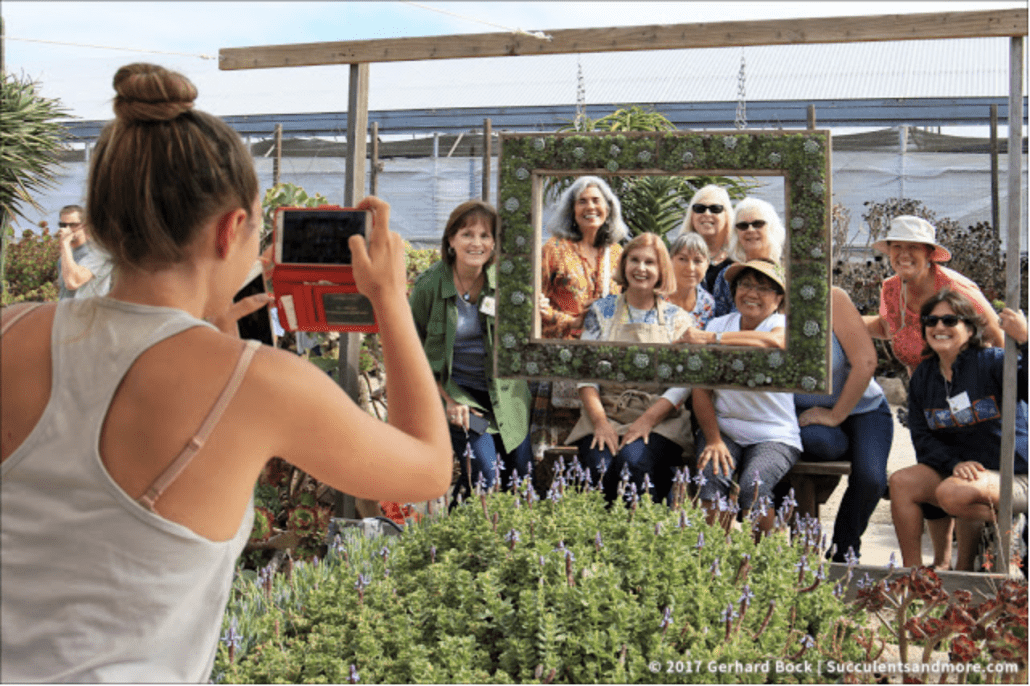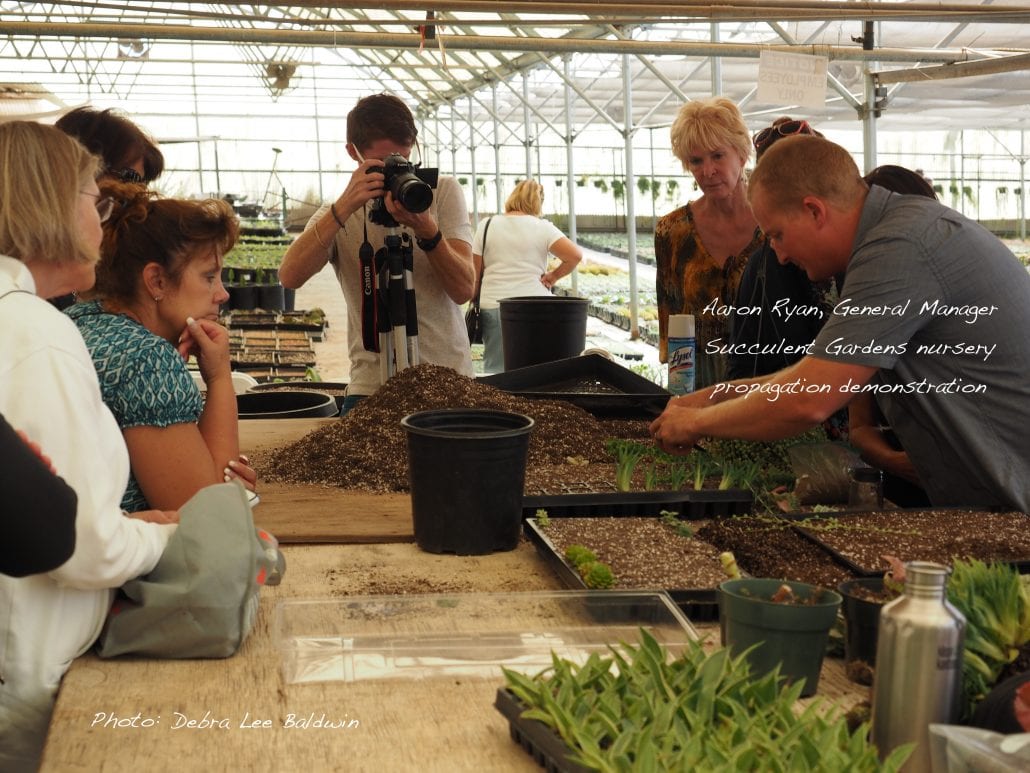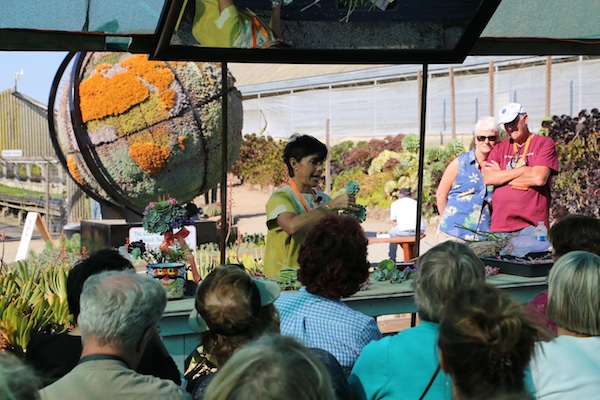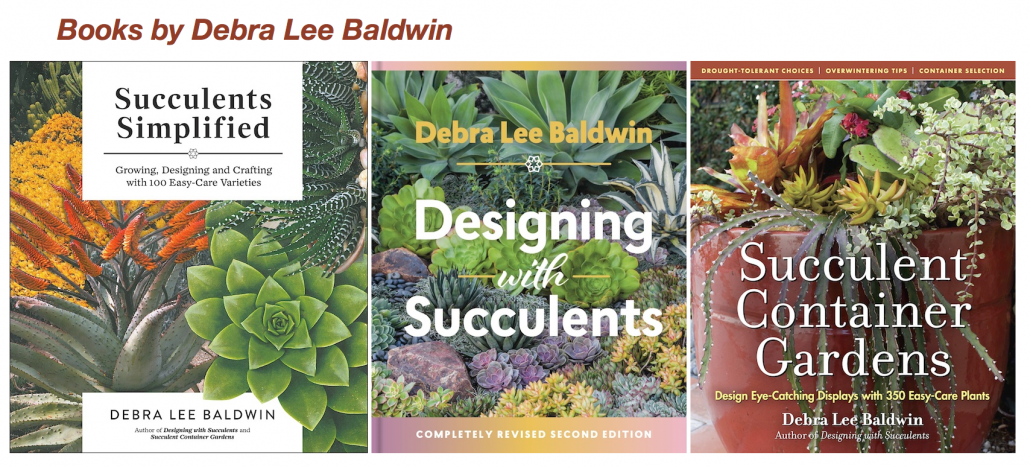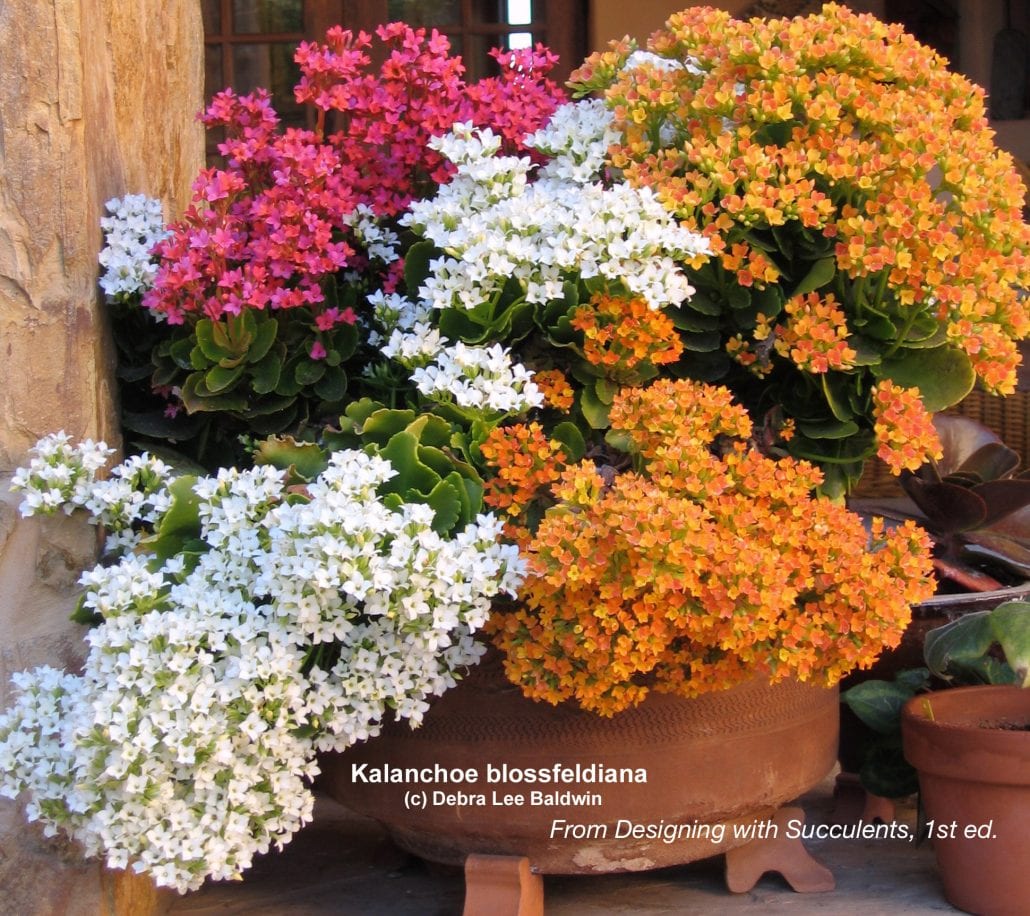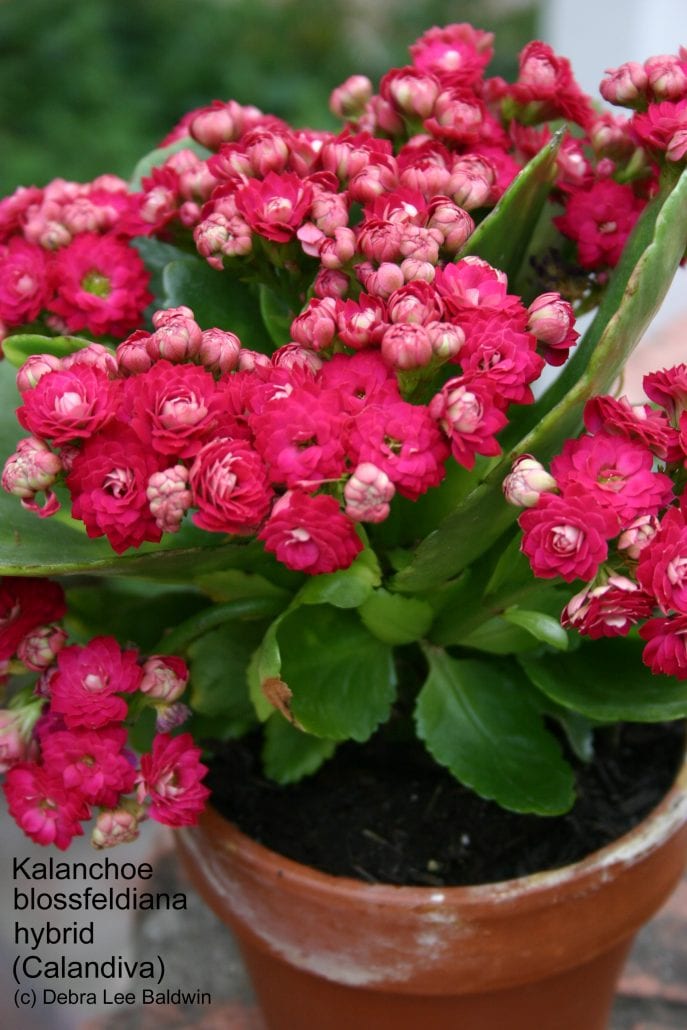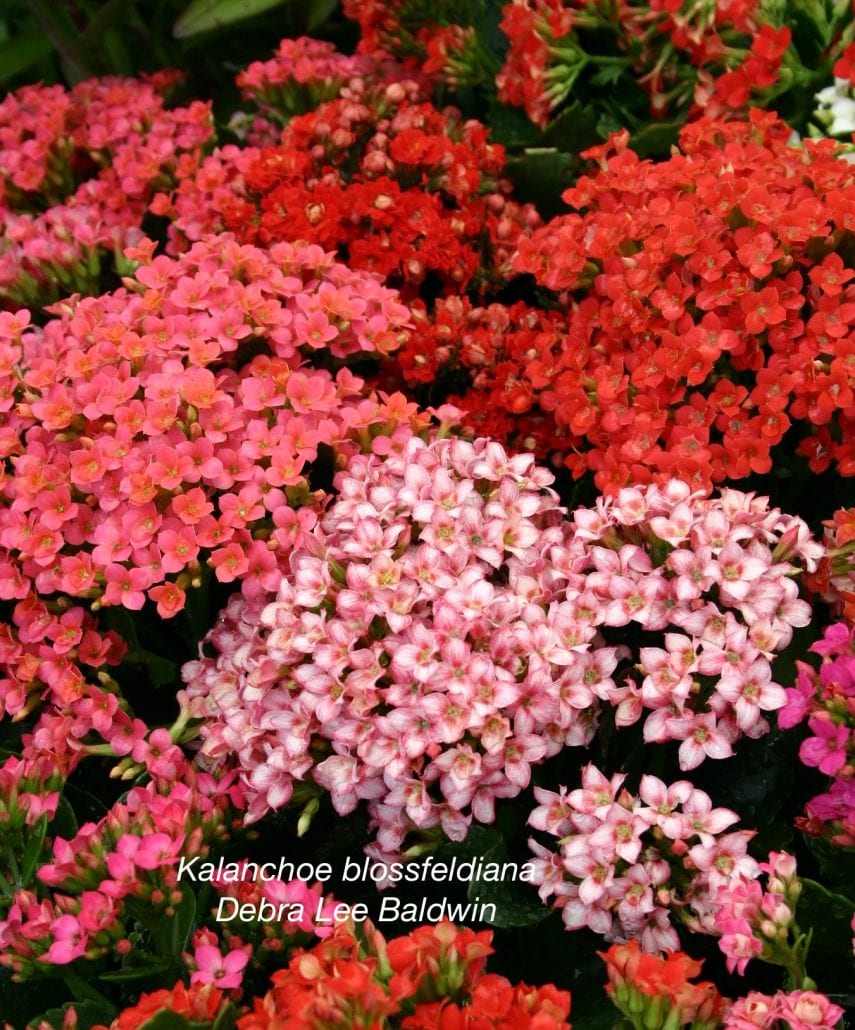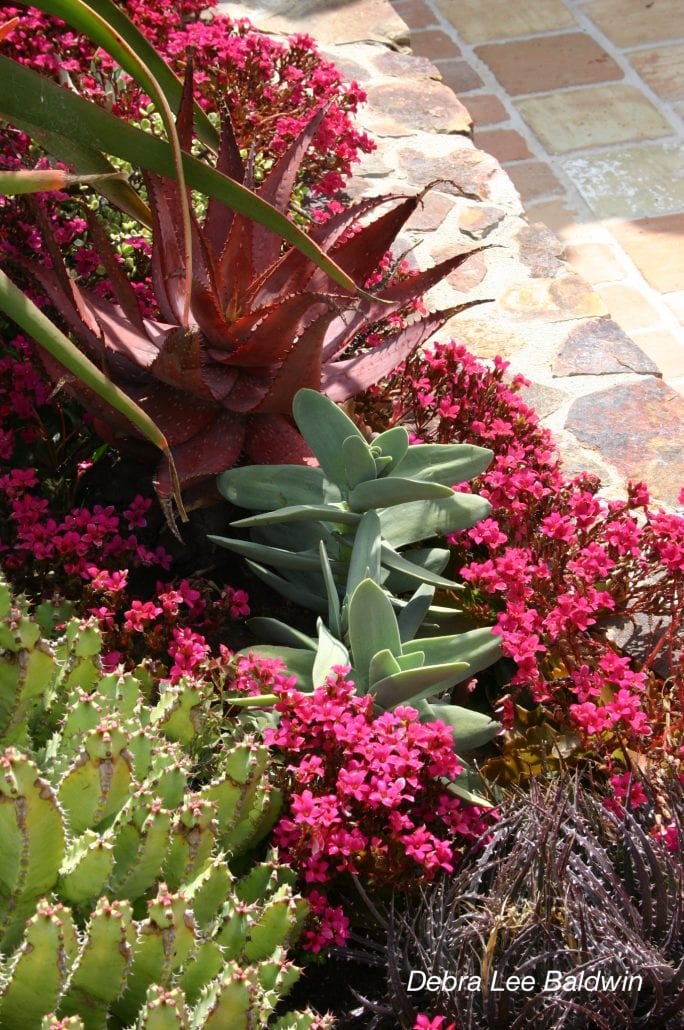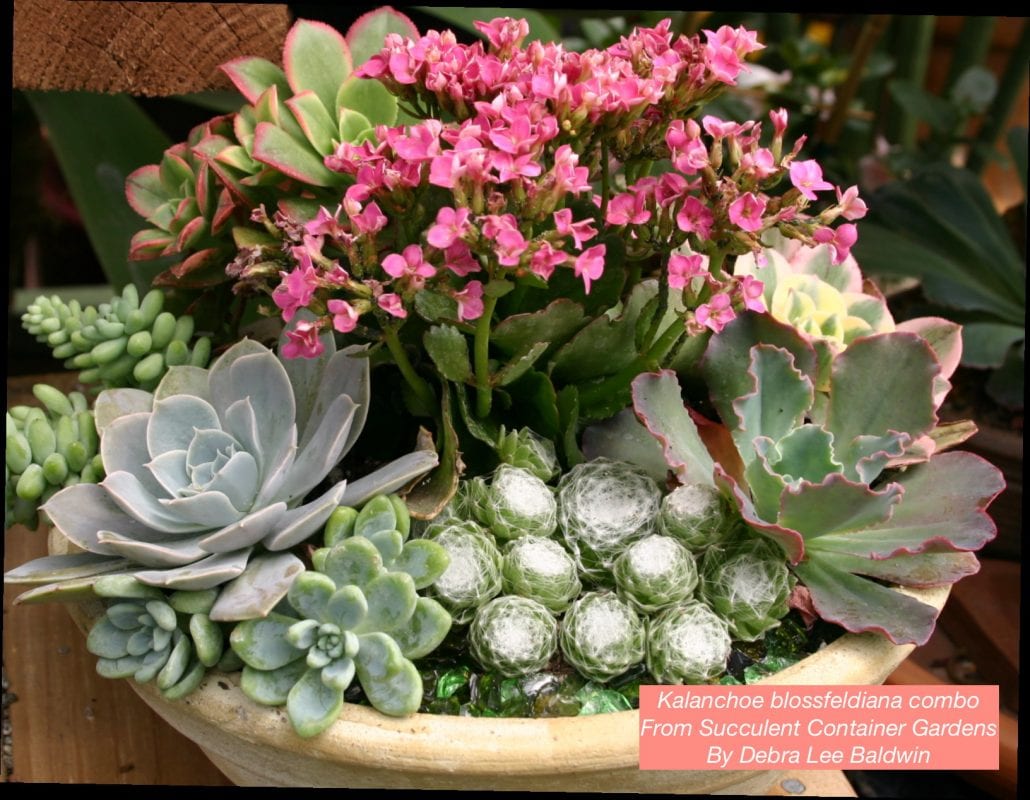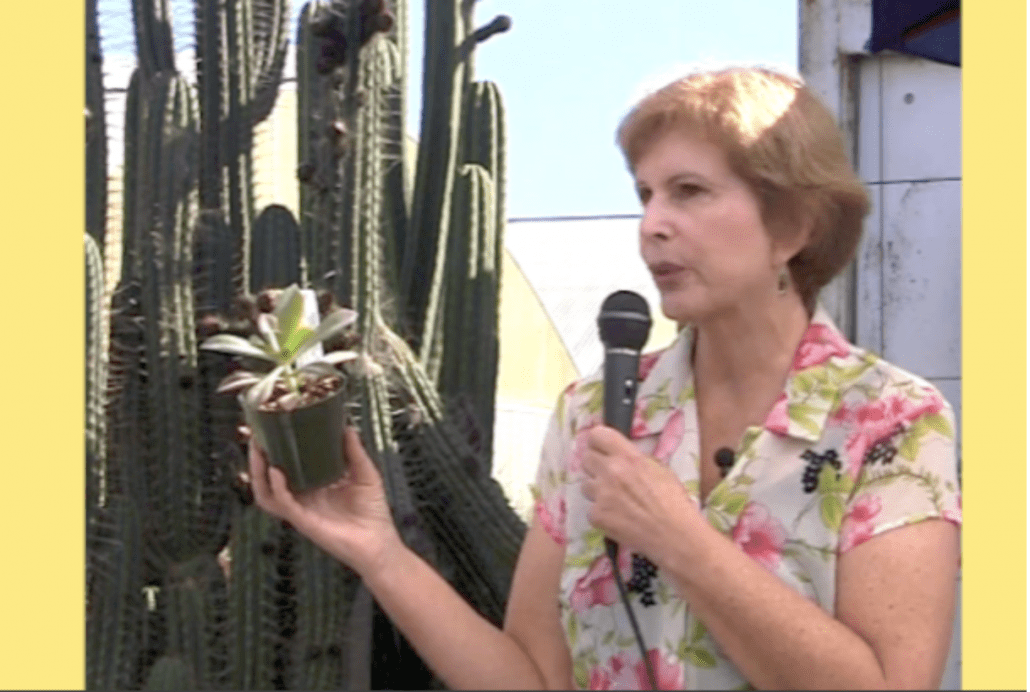
Notice how the green of succulent rosettes contrast beautifully with Cathy Leiss’ auburn hair? She’s a little shy (ha).
Wearing succulents at succulent-themed events is a great ice-breaker. Everyone wants a photo of you. The easiest way to attach succulents to a hat brim, visor, hair ornament or bracelet is with the moss-and-glue method pioneered by San Diego garden designer Laura Eubanks, who first used it to attach succulent cuttings to pumpkins. (As seen in Succulents Simplified, pp.150-155.)

I’m wearing a butterfly hair ornament made by Laura Eubanks for a photo shoot. She used tiny sedum rosettes and string-of-pearls.
Here’s how:
1. Assemble your materials: a hot-glue gun, a hat or other wearable, dry moss (from any craft store), and succulent cuttings.
2. Glue moss to the area you’ll cover with cuttings. Like a moss-filled succulent wreath, this gives the cuttings something to root into.
3. Hot-glue cuttings to the moss. Wondering why they don’t cook? So do I! You can’t touch hot glue without getting burned, but cuttings are fine.
4. Cuttings eventually send roots right through the glue into the moss, so treat the hat as you would a topiary or wreath: Store in bright shade and spritz occasionally.
See the video.
Design inspiration
These are from past events: the Succulent Extravaganza near San Francisco (this year, Sept. 28-29), and the Succulent Celebration near San Diego (coming up April 12-13, 2019):

Laura Balaoro of San Jose, CA, founder of the Succulent Fanatics Facebook group, is known for her succulent chapeaux. In fact, she and I collaborated on an article for a national magazine showing how she does it. Above: Yellow-orange Sedum angelina contrasts with purple echeverias and Sedum ‘Blue Spruce’. Suggesting ribbon is the trailing succulent: variegated rosary vine (Ceropegia woodii ‘Variegata’).
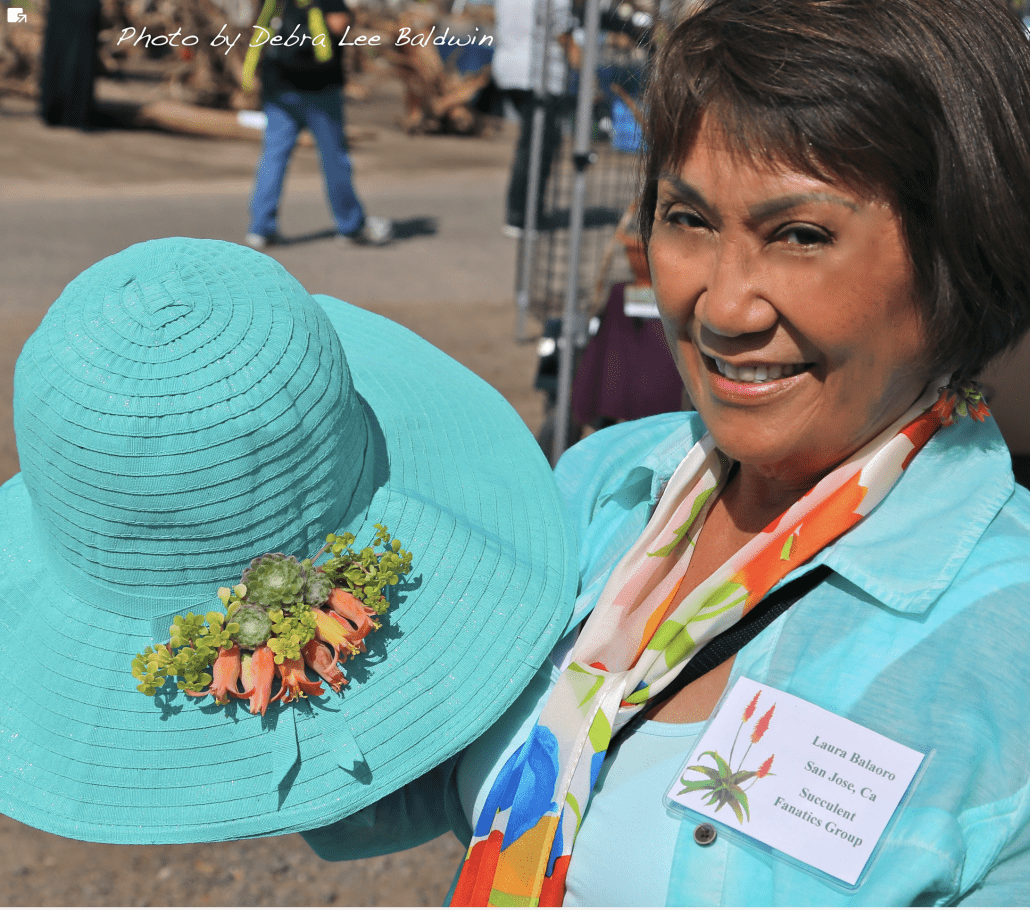
Laura decorates hats to match her colorful outfits.
Above: Laura used bell-shaped cotyledon blooms to add a punch of color to another turquoise hat.
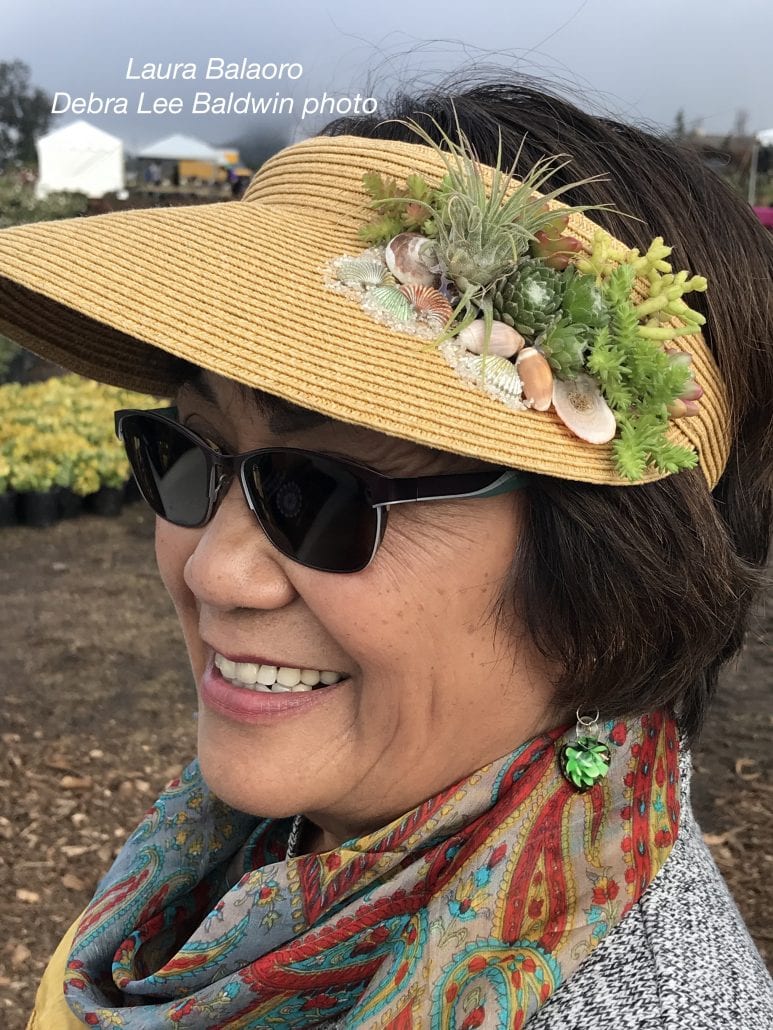
And here, Laura’s sea-themed hat includes a tillandsia, shells and even some sand. Notice her earrings, too.
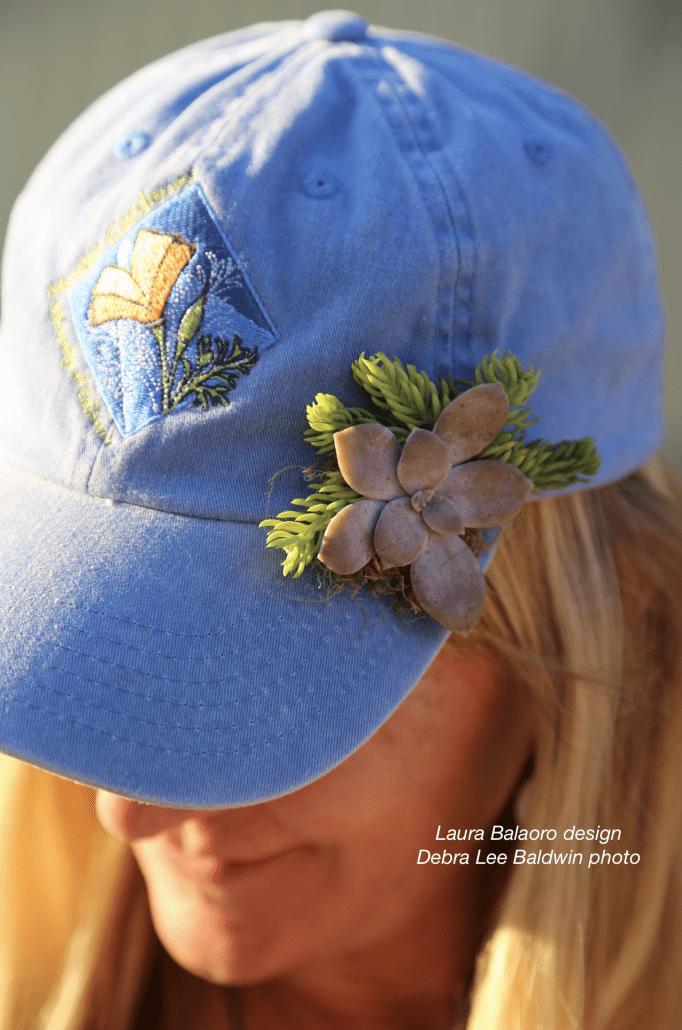
For a friend’s ball cap, Laura repeated an embroidered poppy’s feathery leaves with Sedum angelina.
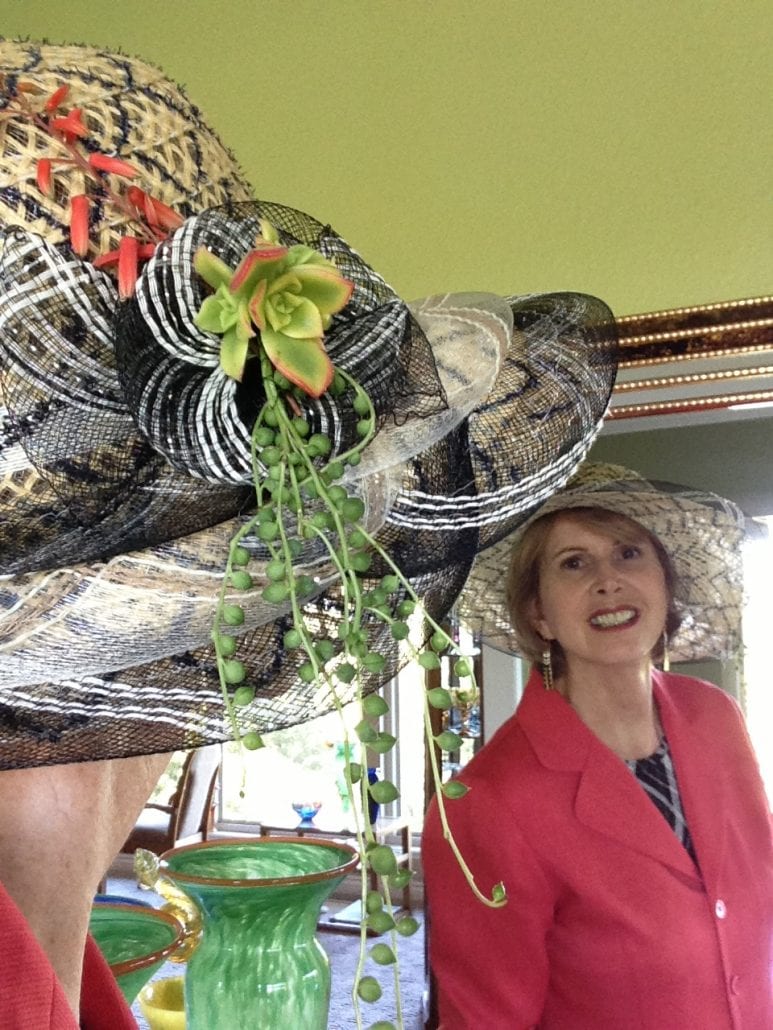
Above: I added Aeonum ‘Kiwi’ rosettes to the center of a hat’s bow, echoed the orange in the rosettes with a flower from a dwarf aloe that happened to be in bloom (to go with my jacket), and added string-of-pearls as a cascader. No glue or moss—pins hold everything in place.
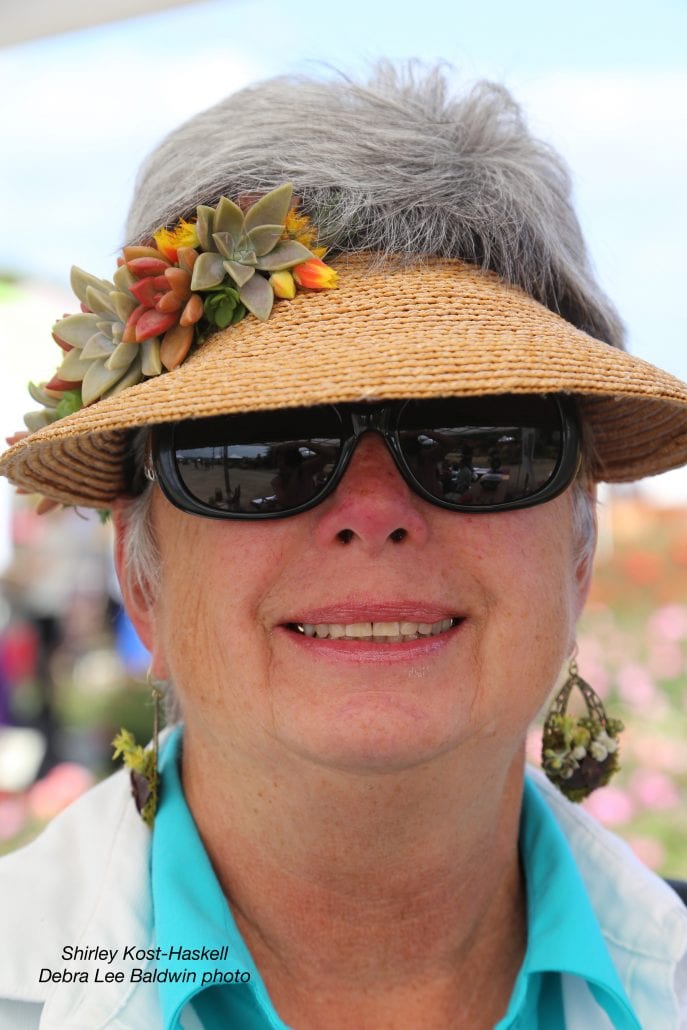
Succulent-decorated hats and art-to-wear
Los Angeles landscape designer Shirley Kost-Haskell can be counted on to decorate a hat or visor with succulents, and earrings too. Look for earrings suitable for moss-and-gluing in the jewelry section of Michael’s craft store.
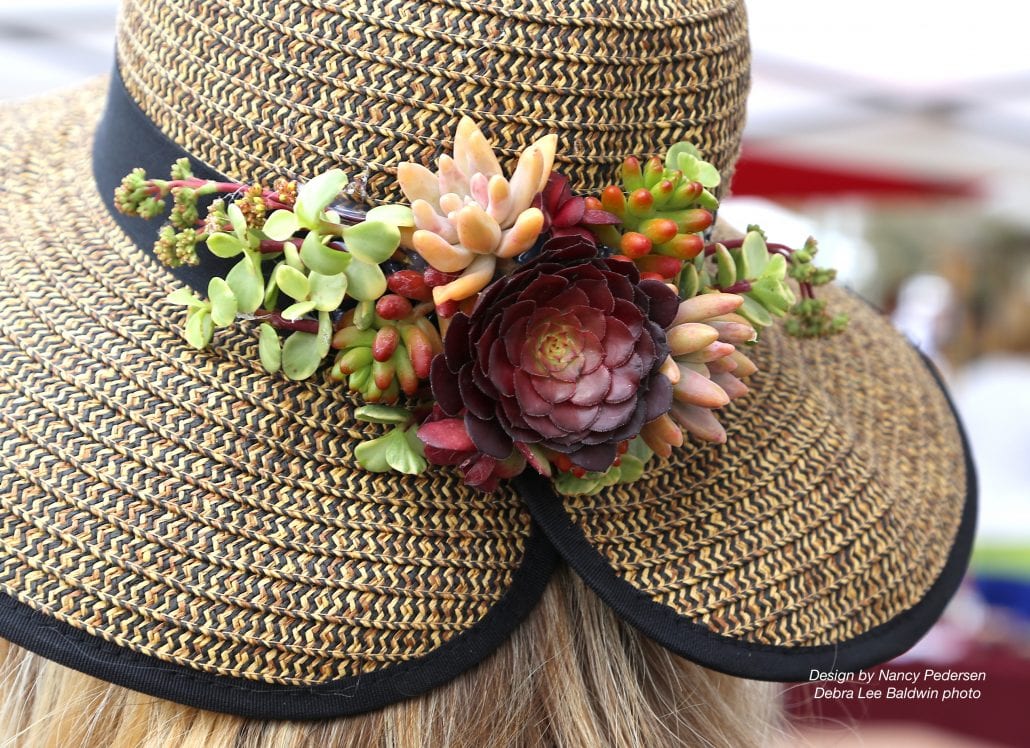
Above: Where lines intersect at the back of Nancy Pedersen’s hat, she placed a red aeonium rosette and surrounded it with smaller cuttings. Btw, try not to touch aeoniums when you design with them—they mar easily, something not evident until the next day (as I explain in a short video, “Aeonium Leaves, What You Need to Know.”)

Above: Lydia Dunaway may have used moss that hangs from trees in the South for her hat…which makes sense, she’s from Florida.

Deana Rae McMillion added dried flowers and fresh succulent blooms for pops of color.
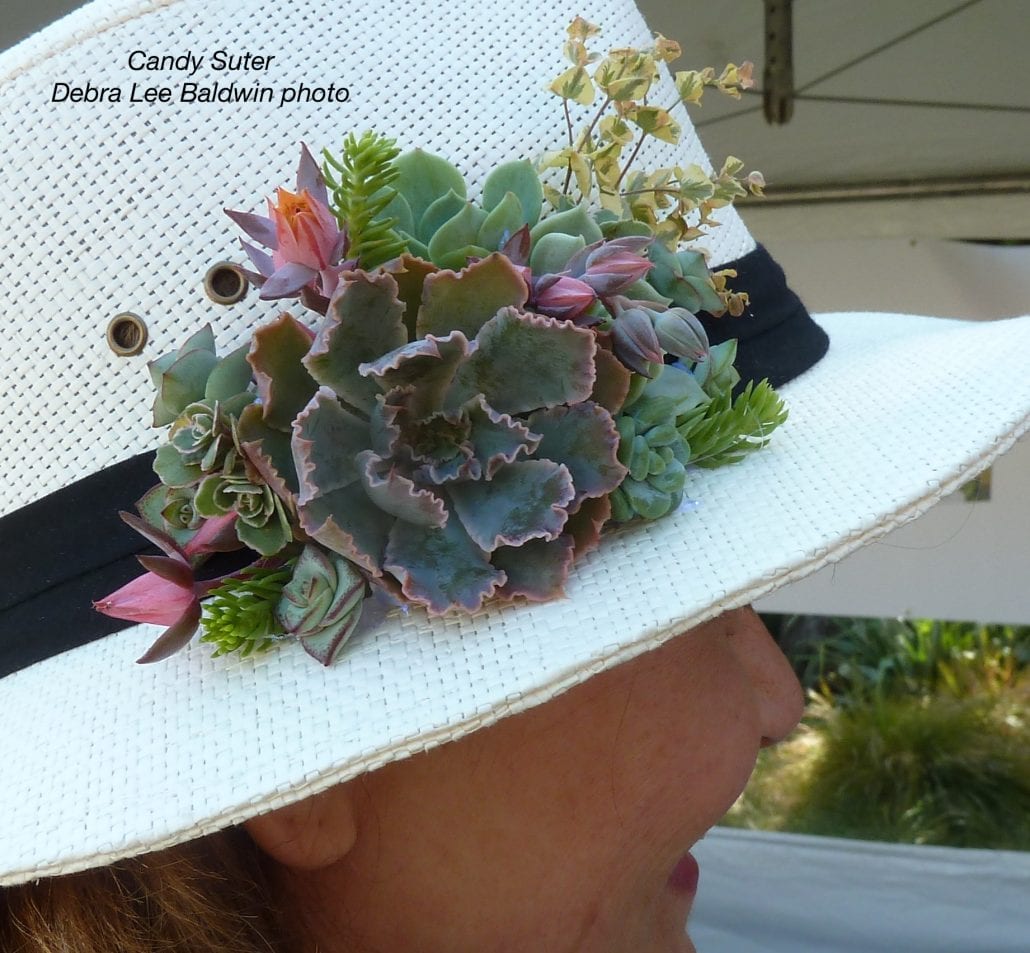
Candy Suter of Roseville near Sacramento does lovely hat-band bouquets. At one event, a fellow attendee asked if she could buy Candy’s hat. Surprised and flattered, she sold it to her.

Carrie Goode from Arizona placed Graptopetalum paraguayense on her hat. This is one succulent that the leaves pop off the stems easily, so working with them takes a delicate touch.

Susan Morse of Vista, CA creates lavish hats. This one features a purple-pink echeveria (E. ‘Perle von Nurnberg’) and ice plant flowers. The flowers close in dim light—which was probably the case when Susan glued them to her hat. Clever of her to know they’d open in full sun!
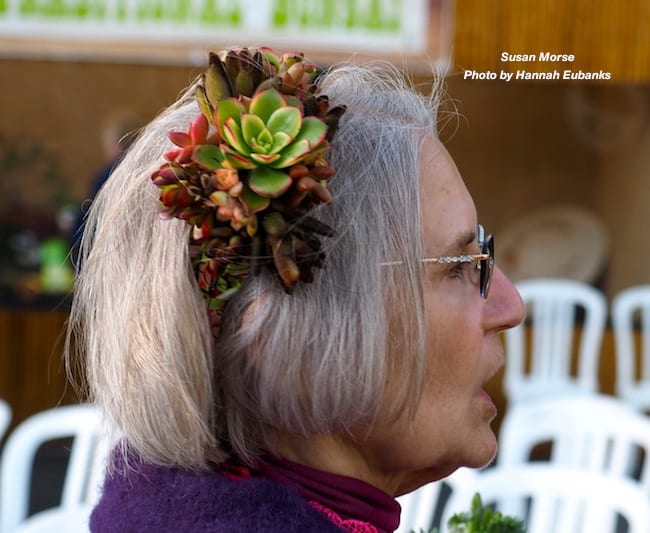
Here’s Susan again, wearing a succulent-decorated headband.
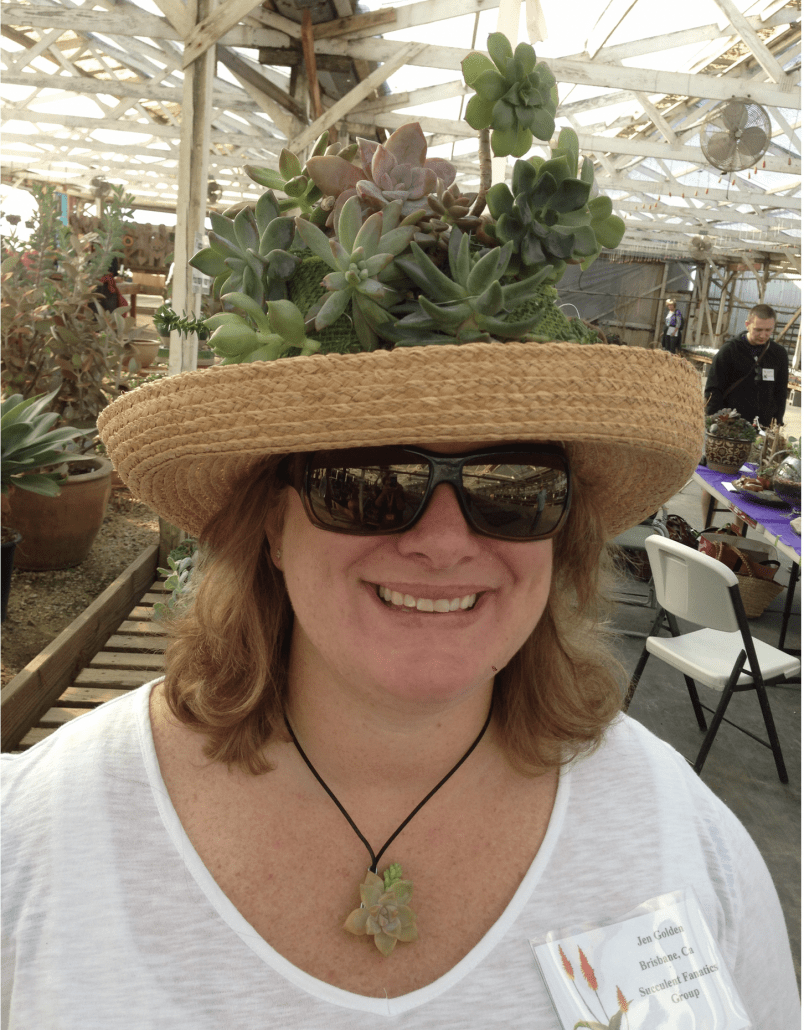
Succulents stay fresh without water because they have so much moisture in their leaves. The downside is that makes them heavy, but Jen Golden of Brisbane, CA, is smiling regardless. Notice her succulent pendant, too.

Designer Katie Christensen glued tiny succulent rosettes, flowers and shells to a hair clip.

Katie taught a class at Weidner’s Gardens on succulent art-to-wear. This is a bracelet from the class. Find the DIY on my YouTube channel: “Fashion Wearable Succulents for Weddings, Gifts and Garden Events.”
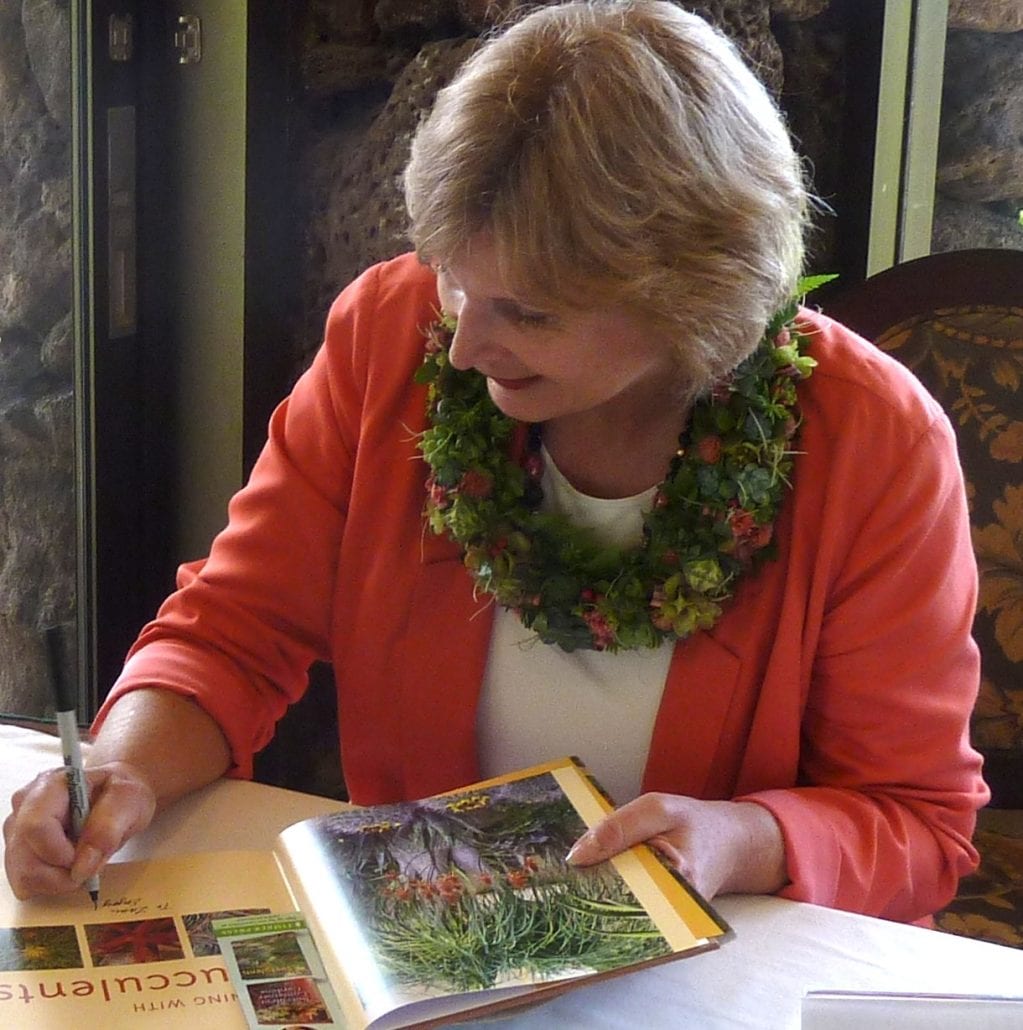
I’m not suggesting you take the time and trouble to make a succulent lei, but I just had to show you this one, a gift from the Honolulu Garden Club.
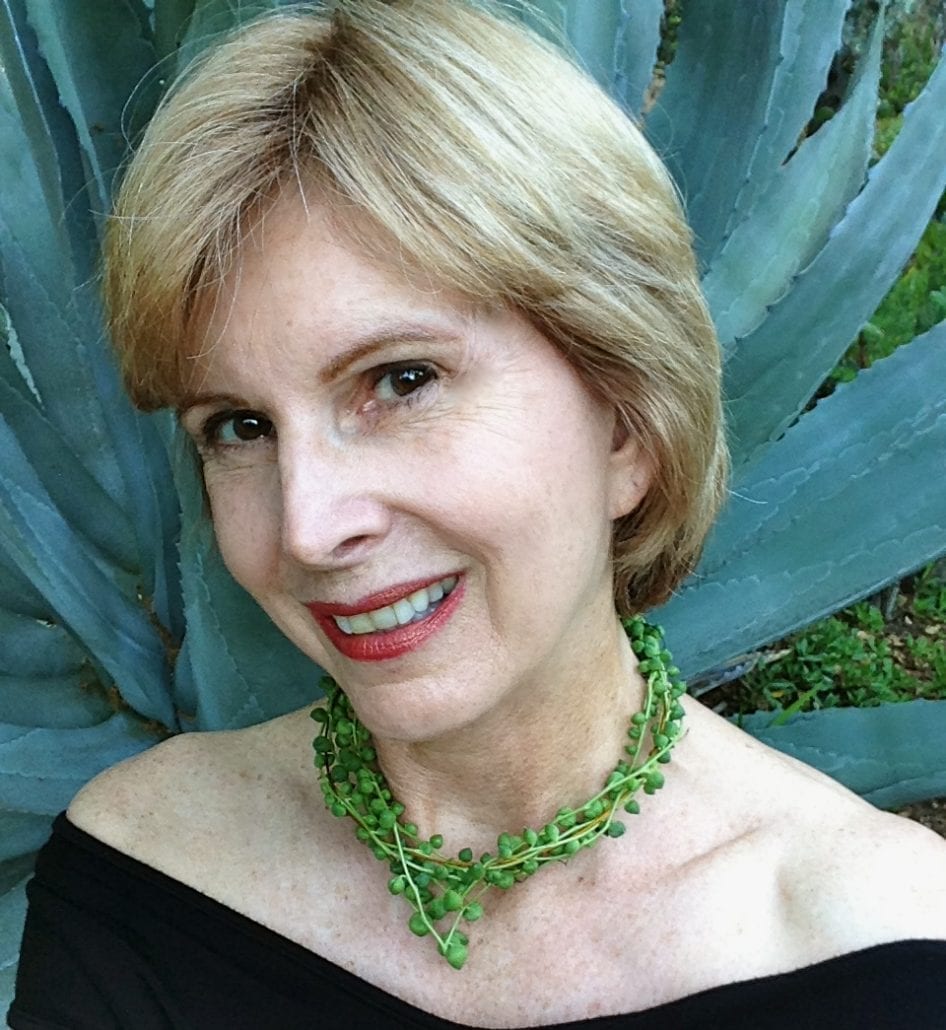
Guess what? String-of-pearls makes a miserable necklace. Those little spherical leaves each have a little point that’ll irritate your skin. After this selfie, I was happy to take it off.
Fabulous fakes
The downside to using fresh floral material—even succulents—is that they don’t last forever. If you get a couple of weeks out of them, you’re doing good. It’s not that they wither and die, but rather that they get leggy. New growth elongates the rosette, and lower leaves dry and fall off. Cuttings can be salvaged (even reused), but you’ll need to pull them off the decorated object and start over.
So instead, why not use fake succulents?
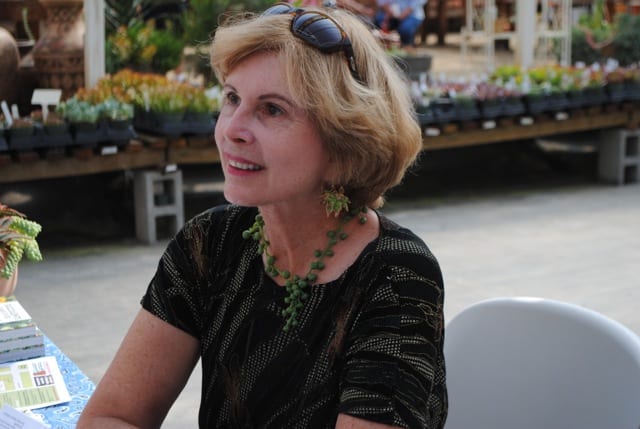
Plastic string-of-pearls are available online for around $10.

For a recent Succulent Celebration, I fashioned succulents out of Sculpey clay and hot-glued them to my visor. No moss needed, and they’ll likely last the life of the hat. Watch the video: DIY Sculpey Succulent: Striped Agave (3:15).

I glued faux rosettes to a headband too. But when the plastic flexed, a couple of them popped off.
I also glued them to succulent crowns for selfies. This is Hannah Eubanks, Laura E’s daughter. Both will be at Succulent Extravaganza 2018. I have no idea what they’ll wear. Regardless, be sure to greet them and other clever succulent fashionistas you see.
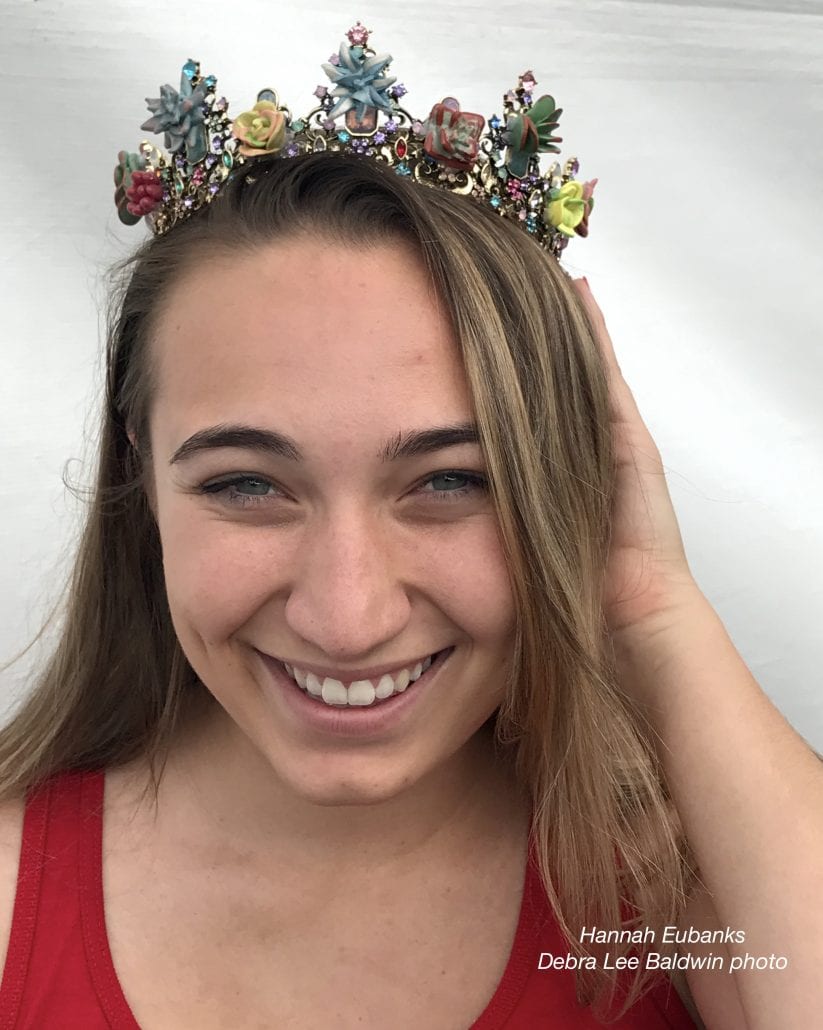
I’ve yet to see a succulent buckle, nose ring, belt, or bunny ears. Maybe you’ll be the first? Send me photos!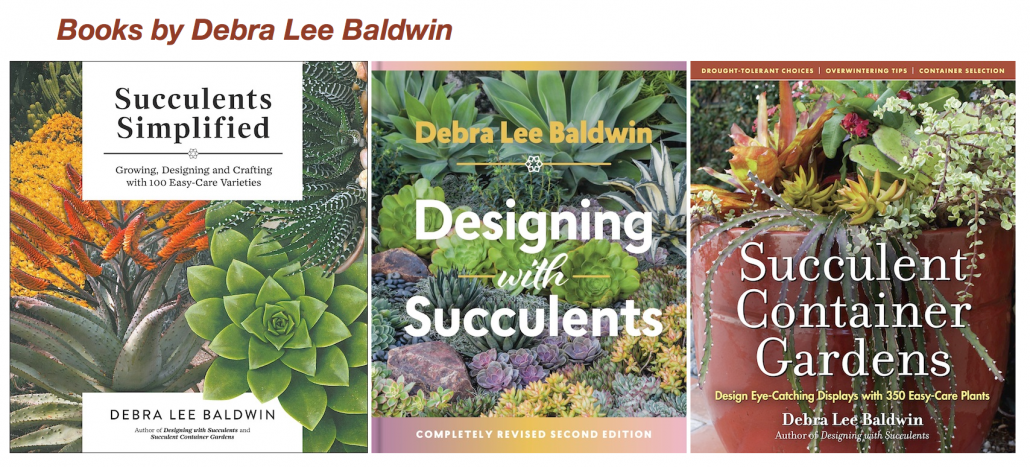
The post What to Wear at Succulent Events appeared first on Succulents and Succulent Garden Design | Debra Lee Baldwin.
from Succulents and Succulent Garden Design | Debra Lee Baldwin https://ift.tt/2P0XpUz
via
IFTTT

